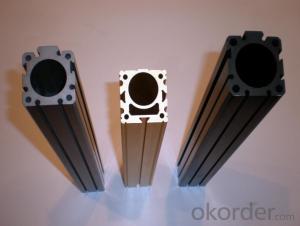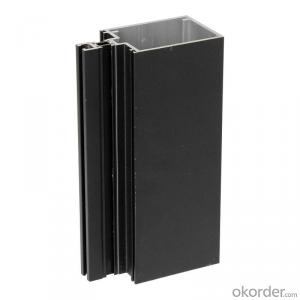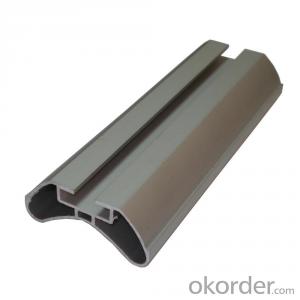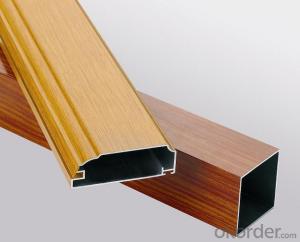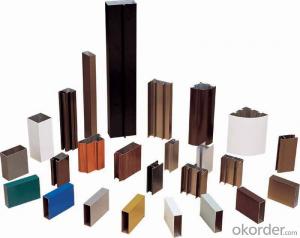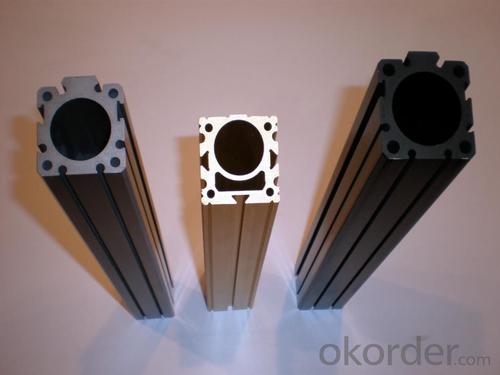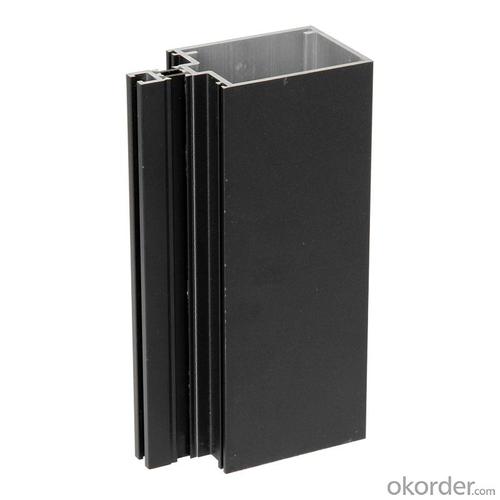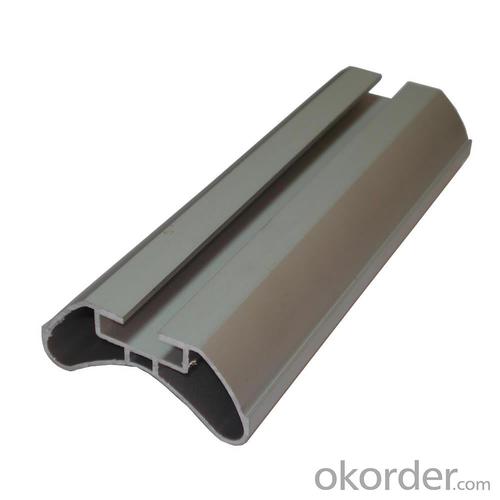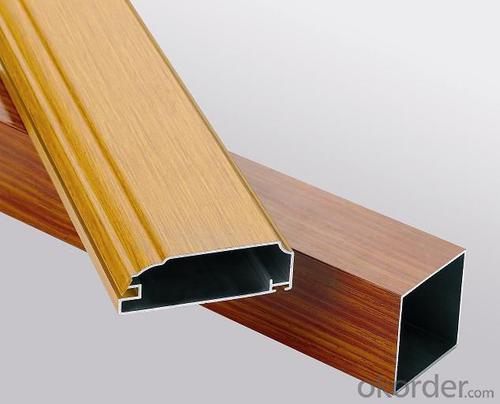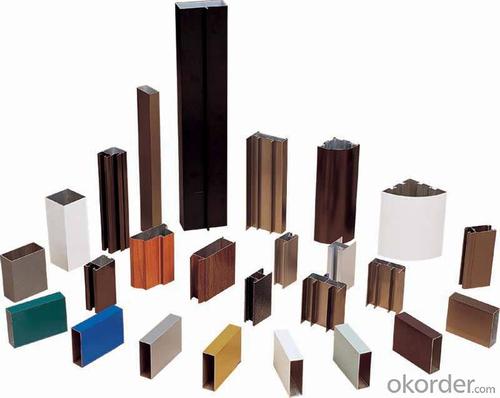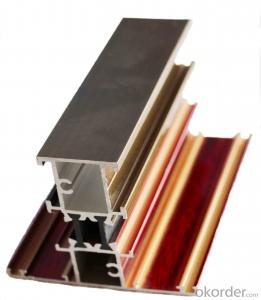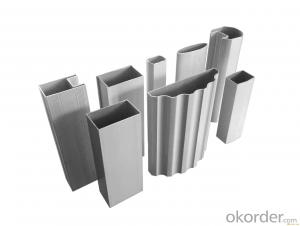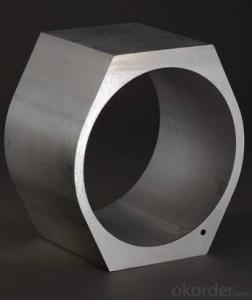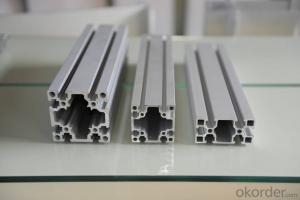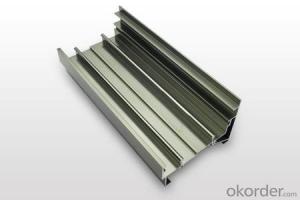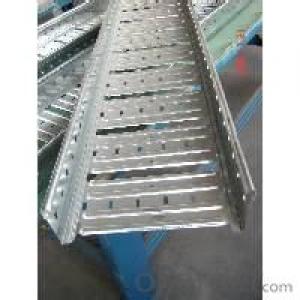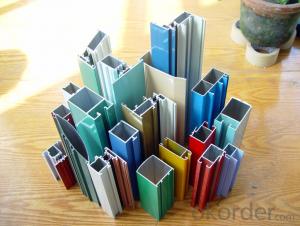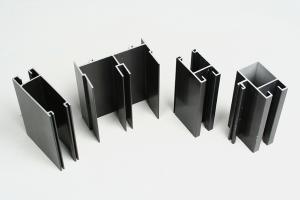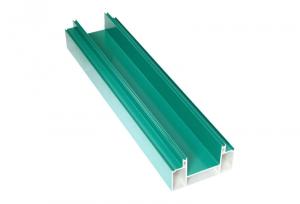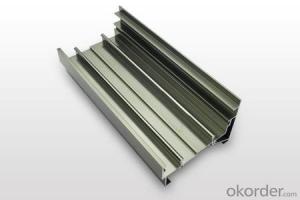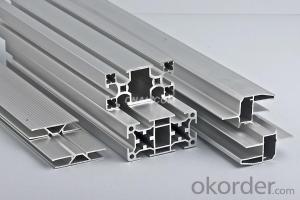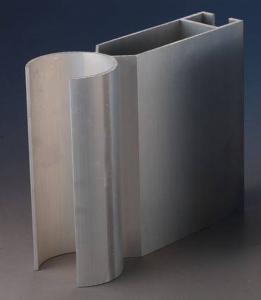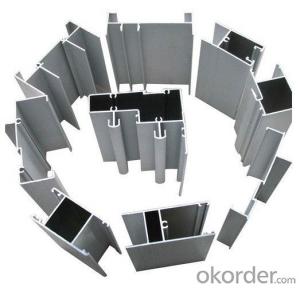Aluminum Glazing Profiles for Window and Door Aluminium Profiles
- Loading Port:
- China Main Port
- Payment Terms:
- TT OR LC
- Min Order Qty:
- -
- Supply Capability:
- -
OKorder Service Pledge
OKorder Financial Service
You Might Also Like
Aluminium profile
1) Alloy: AA6061, AA6063
2) Temper: T5, T6
3) Series of surface treament:
1. Mill Finished
2. Anodizing: Silver, champagne, light bronze, dark bronze, black, light titanium, dark titanium.
3. Electrophoretic Coating: Silver, champagne, bronze, black, light bronze, dark bronze.
4. Electrostatic Color Powder Coating: Normal color, special color.
5. Fluorocarbon Powder Spraying: Normal color, special color.
6. Wood Grain Coating: Import paper, domestic paper.
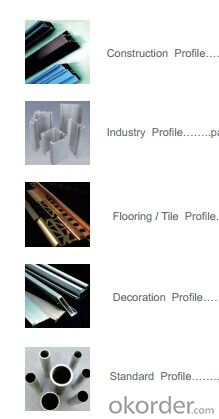
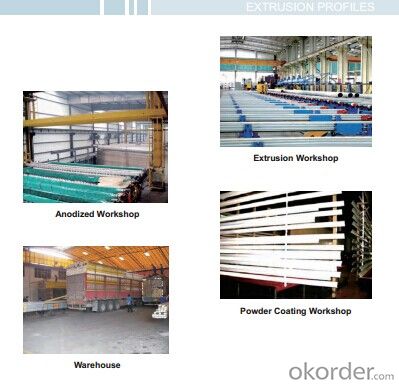
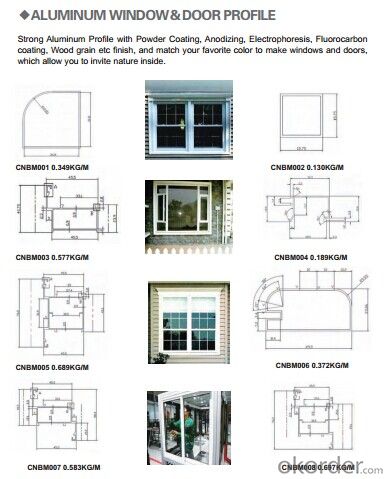
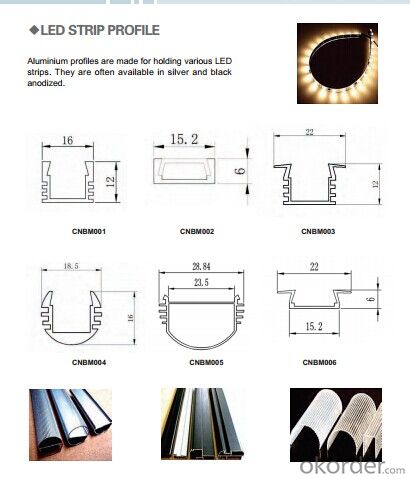
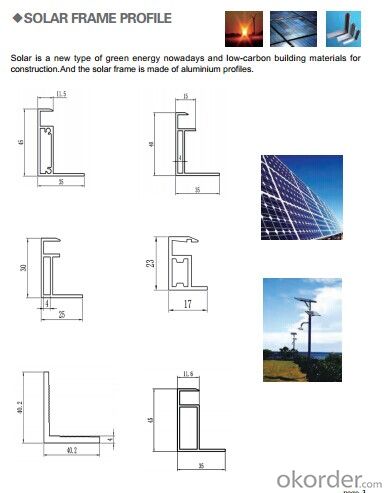
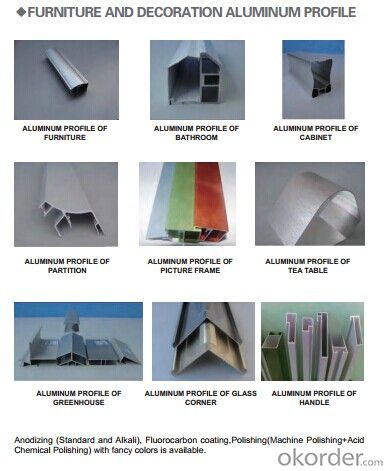
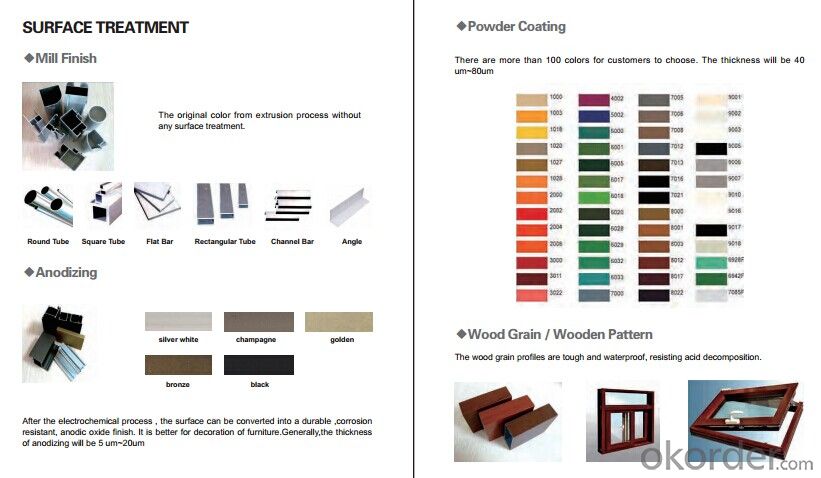
- Q: Can aluminum profiles be used in curtain wall systems?
- Indeed, curtain wall systems have the capacity to incorporate aluminum profiles. Such systems usually consist of lightweight materials that provide structural support while simultaneously permitting ample natural light to infiltrate a building. The utilization of aluminum in curtain wall systems is quite prevalent owing to its robustness, endurance, and versatility. Aluminum showcases exceptional resistance against corrosion, rendering it suitable for outdoor applications. Furthermore, aluminum profiles can be readily fabricated into diverse shapes and sizes, thus enabling flexibility in design and assembly. The lightweight nature of aluminum also facilitates easier and more cost-effective installation. In summary, aluminum profiles offer an optimal solution for curtain wall systems, delivering both aesthetic allure and functional efficacy.
- Q: How do aluminum profiles compare to plastic profiles?
- Various industries commonly use aluminum profiles and plastic profiles for different purposes. When comparing these two materials, there are several factors that need consideration. Strength and durability are important factors to consider. Generally, aluminum profiles are stronger and more durable than plastic profiles. Aluminum possesses high tensile strength, enabling it to withstand heavy loads and resist deformation. Conversely, plastic profiles are more prone to cracking or breaking under excessive stress. Another factor to consider is weight. Aluminum profiles are heavier compared to plastic profiles. This characteristic can be advantageous or disadvantageous depending on the specific application. The weight of aluminum can provide stability and strength, while the lightweight nature of plastic makes it easier to handle and install. Corrosion resistance is also a significant aspect to examine. Aluminum profiles exhibit excellent corrosion resistance properties, enabling them to endure exposure to various environmental conditions. This makes them suitable for outdoor applications. In contrast, plastic profiles are not as resistant to certain chemicals or UV radiation, which can cause degradation over time. Flexibility and design are important considerations as well. Plastic profiles offer greater design flexibility compared to aluminum profiles. Plastic can be molded easily into complex shapes and customized to meet specific requirements. Aluminum, although less flexible, can still be shaped or extruded into different profiles within certain limitations. Thermal and electrical conductivity should also be taken into account. Aluminum profiles have superior thermal conductivity, allowing them to dissipate heat more effectively. Consequently, they are often used in applications where heat dissipation is critical, such as electronics or heat sinks. Plastic profiles, on the other hand, have lower thermal conductivity and are less suitable for such applications. Cost is another factor to consider. Generally, plastic profiles are more cost-effective than aluminum profiles. The manufacturing process for plastic profiles is simpler and cheaper, resulting in lower production costs. Conversely, aluminum profiles require more advanced manufacturing techniques and additional finishing processes, making them relatively more expensive. In conclusion, the choice between aluminum and plastic profiles depends on the specific requirements of the application. Aluminum profiles offer superior strength, durability, and corrosion resistance, making them suitable for heavy-duty or outdoor applications. On the other hand, plastic profiles provide more design flexibility and cost-effectiveness, making them ideal for lightweight or customized applications.
- Q: How about the weight calculation of 180 series semi concealed curtain wall aluminum profile
- A section of properties in CAD labeled dynamic block, the section area and mark block association graph can be easily calculated, section area, surface area, weight theory, and the setting up of a variety of materials such as aluminum options.
- Q: What are the aluminum packaging methods?
- Aluminum is made from aluminum and other alloy elements. It is usually processed into casting, forging, and foil, plate, strip, tube, rod, section bar, etc., and then made by cold bending, sawing, drilling, assembling and coloring. The main metal element is aluminum, which is added with some alloying elements to improve the performance of aluminum.
- Q: This question asks whether aluminum profiles are susceptible to damage from moisture and corrosion.
- <p>Aluminum profiles are generally resistant to moisture and corrosion due to their natural protective oxide layer. However, this resistance can be compromised in certain conditions. For instance, in highly corrosive environments or when exposed to aggressive chemicals, the protective layer may not be sufficient. Additionally, if the aluminum is not properly sealed or coated, it can still be affected by moisture over time. It's important to maintain the integrity of the protective layer and consider the specific environment when using aluminum profiles to ensure their longevity and resistance to corrosion.</p>
- Q: Are aluminum profiles suitable for use in the electronics industry?
- The electronics industry finds aluminum profiles to be a suitable option. Aluminum, being lightweight, durable, and resistant to corrosion, becomes an excellent choice for different electronic applications. Its exceptional thermal conductivity facilitates efficient dissipation of heat in electronic devices, which is crucial to avoid overheating and ensure optimal performance. Moreover, aluminum profiles can be easily customized and fabricated to fulfill specific design requirements, making them adaptable for various electronic components and enclosures. They also possess electromagnetic shielding properties, safeguarding sensitive electronic circuits from interference. All in all, aluminum profiles provide numerous advantages for the electronics industry, making them a popular and appropriate option for electronic devices and equipment.
- Q: This question asks about the various uses of aluminum profiles in the construction of buildings.
- <p>Aluminum profiles have a wide range of applications in building construction due to their strength, durability, and lightweight properties. They are used in window and door frames, curtain walls, and structural glazing systems for their high strength-to-weight ratio and resistance to corrosion. Additionally, aluminum profiles are utilized in the construction of balconies, handrails, and stairways for their ability to withstand harsh weather conditions. They are also employed in the fabrication of modular building systems and prefabricated components, offering ease of assembly and design flexibility. Furthermore, aluminum profiles are used in the construction of solar panel mounting systems and facades due to their thermal conductivity and ability to support heavy loads.</p>
- Q: This question asks if aluminum profiles can be recycled with ease and at a low cost.
- <p>Yes, aluminum profiles can be recycled easily and at a low cost. Aluminum has one of the highest recycling rates among metals due to its non-toxic nature and the fact that it does not lose quality when recycled. The recycling process is energy-efficient, requiring only 5% of the energy needed to produce new aluminum. Additionally, the cost of recycling aluminum is significantly lower than the cost of mining and processing new aluminum, making it an economically viable and environmentally friendly option.</p>
- Q: Can aluminum profiles be used in outdoor applications?
- Yes, aluminum profiles can be used in outdoor applications. Aluminum is a versatile and durable material that is resistant to corrosion and weathering, making it suitable for outdoor use. It is commonly used in the construction industry for outdoor structures such as fences, railings, pergolas, and outdoor furniture. Additionally, aluminum profiles can be treated with various coatings or finishes to enhance their resistance to UV rays, moisture, and other environmental factors. Overall, aluminum profiles offer a reliable and long-lasting solution for outdoor applications.
- Q: Why should aluminum surface treatment process?
- He devotes himself to aluminum passivation, electroplating and surface treatment, and has problems to visit at any time.
Send your message to us
Aluminum Glazing Profiles for Window and Door Aluminium Profiles
- Loading Port:
- China Main Port
- Payment Terms:
- TT OR LC
- Min Order Qty:
- -
- Supply Capability:
- -
OKorder Service Pledge
OKorder Financial Service
Similar products
Hot products
Hot Searches
Related keywords
